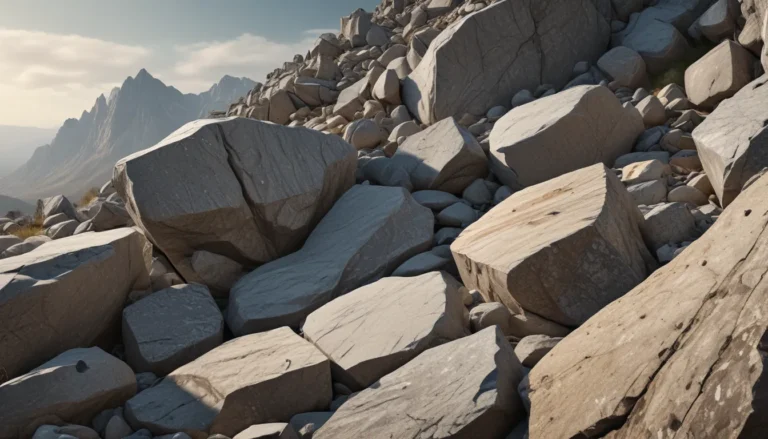A Note About Images: The images used in our articles are for illustration purposes only and may not exactly match the content. They are meant to engage readers, but the text should be relied upon for accurate information.
Have you ever wondered how organic material turns into stone over millions of years? Lapidification, also known as petrification, is a mesmerizing natural phenomenon that continues to intrigue scientists and enthusiasts worldwide. From ancient myths to modern scientific discoveries, the process of lapidification has left behind breathtaking geological formations that stand as a testament to the passage of time.
In this article, we will delve into the world of lapidification and explore 14 astounding facts about this extraordinary transformation. Join us on a journey through time as we unravel the mysteries and marvels of lapidification, shedding light on the science behind it and uncovering some of the most remarkable examples found around the globe.
Unveiling the Science of Lapidification
- Lapidification, or petrification, is the process in which organic material such as plants or animals turns into solid stone over time through mineral replacement.
- The process can occur through various mechanisms, including permineralization and replacement, resulting in the formation of stunning lapidified specimens.
- Fossils, one of the most well-known products of lapidification, are formed when minerals gradually replace the remains of plants or animals buried under sediment.
Preserving Ancient Life Forms Through Lapidification
- Lapidification has the remarkable ability to preserve intricate details of ancient organisms, offering scientists a glimpse into the past and enabling the study of extinct species.
- The transformation from organic material to stone can take millions of years, ensuring the long-term preservation of the original structure and composition of the organism.
- Lapidified fossils can be found all around the world, spanning various geologic eras and types of rock, providing valuable insights into the history of life on Earth.
Beyond Plants and Animals: The Diversity of Lapidification
- While commonly associated with plants and animals, lapidification can also occur with other organic materials such as wood, shells, and feathers.
- The process can produce stunning and unique specimens, showcasing vibrant mineral colors and intricate patterns that highlight the beauty of nature’s transformation.
- Lapidification has been instrumental in providing significant scientific insights into ancient ecosystems, evolutionary processes, and paleontological discoveries.
Embracing the Diversity of Lapidification
- Lapidification is not restricted to a particular geologic era, with lapidified fossils found across millions of years of Earth’s history, offering a window into the evolution of life forms.
- The process can occur in different types of rock, including sedimentary, metamorphic, and igneous rocks, depending on the geological conditions and mineral replacement processes.
- In addition to preserving the structure of ancient organisms, lapidification can also retain traces of ancient organic molecules, allowing scientists to study genetic material and biochemical processes.
Continuing the Legacy of Lapidification
- Lapidification continues to captivate scientists, paleontologists, and enthusiasts worldwide, providing valuable knowledge and insight into Earth’s history and evolution.
- By understanding the process of lapidification, we can appreciate the natural beauty of stones and fossils that have undergone remarkable transformations over millions of years.
- The next time you come across a lapidified specimen, take a moment to ponder its incredible journey and the forces at work beneath our feet, reminding us of the wonders of nature’s transformation.
Frequently Asked Questions
Q: What is lapidification?
A: Lapidification is the process by which organic material, such as wood or bones, is transformed into stone over millions of years through mineral replacement.
Q: How long does lapidification take?
A: Lapidification is a slow process that can take thousands to millions of years, influenced by factors such as the type of organic material and geological conditions.
Q: Why is lapidification important?
A: Lapidification helps us understand Earth’s history, the evolution of life forms, and past environmental conditions, while also enabling the study and appreciation of natural stones and fossils.
Conclusion: Embracing the Beauty of Lapidification
As we uncover the wonders of lapidification, we are reminded of the incredible forces at play in our natural world. From preserving intricate details of ancient life forms to offering insights into Earth’s history, lapidification continues to amaze and inspire us.
Through the exploration of these astounding facts, we gain a deeper appreciation for the remarkable journey that stones and fossils have undergone over millions of years. Let us embrace the beauty and complexity of lapidification, honoring its legacy as a process that shapes our understanding of the past and the marvels of nature around us.






